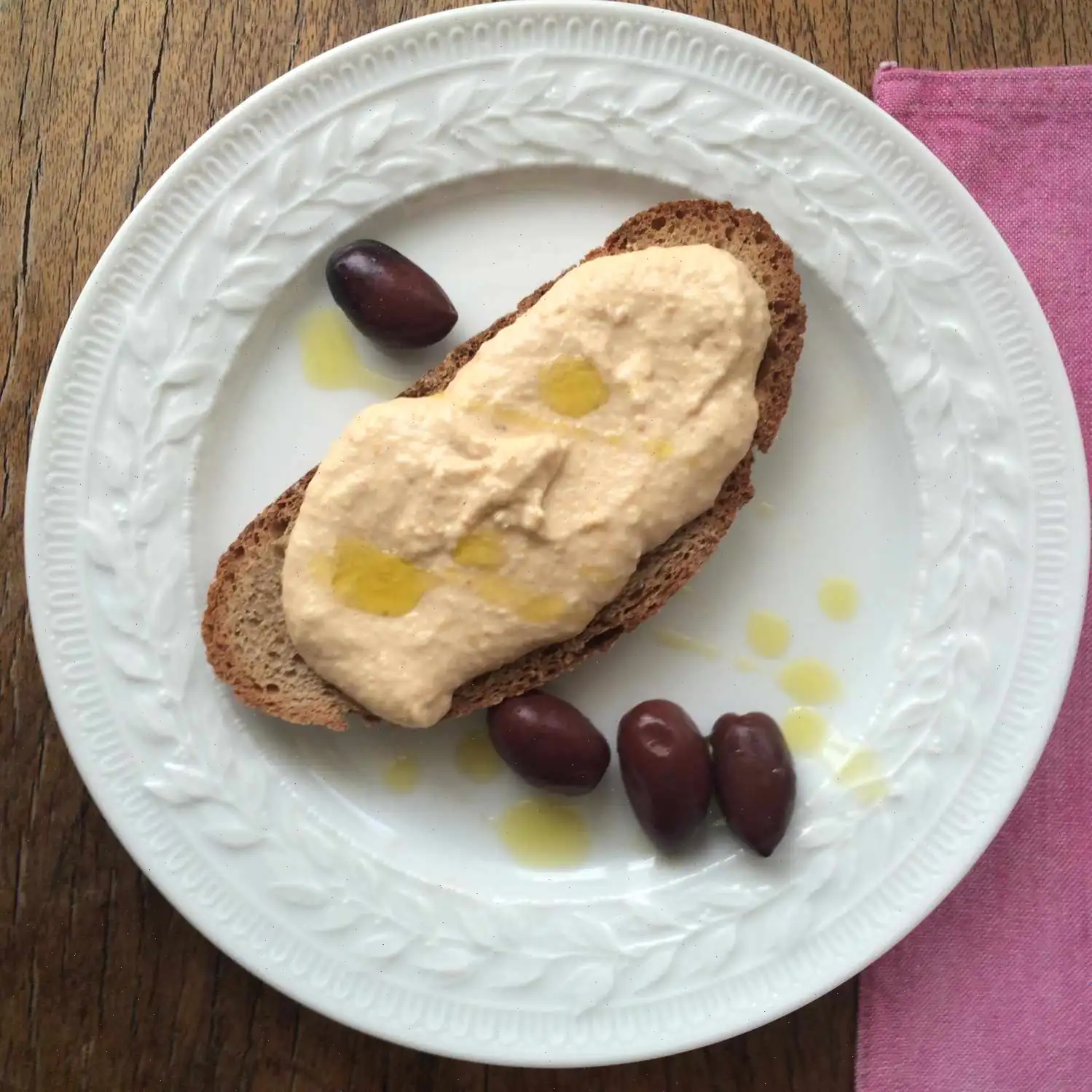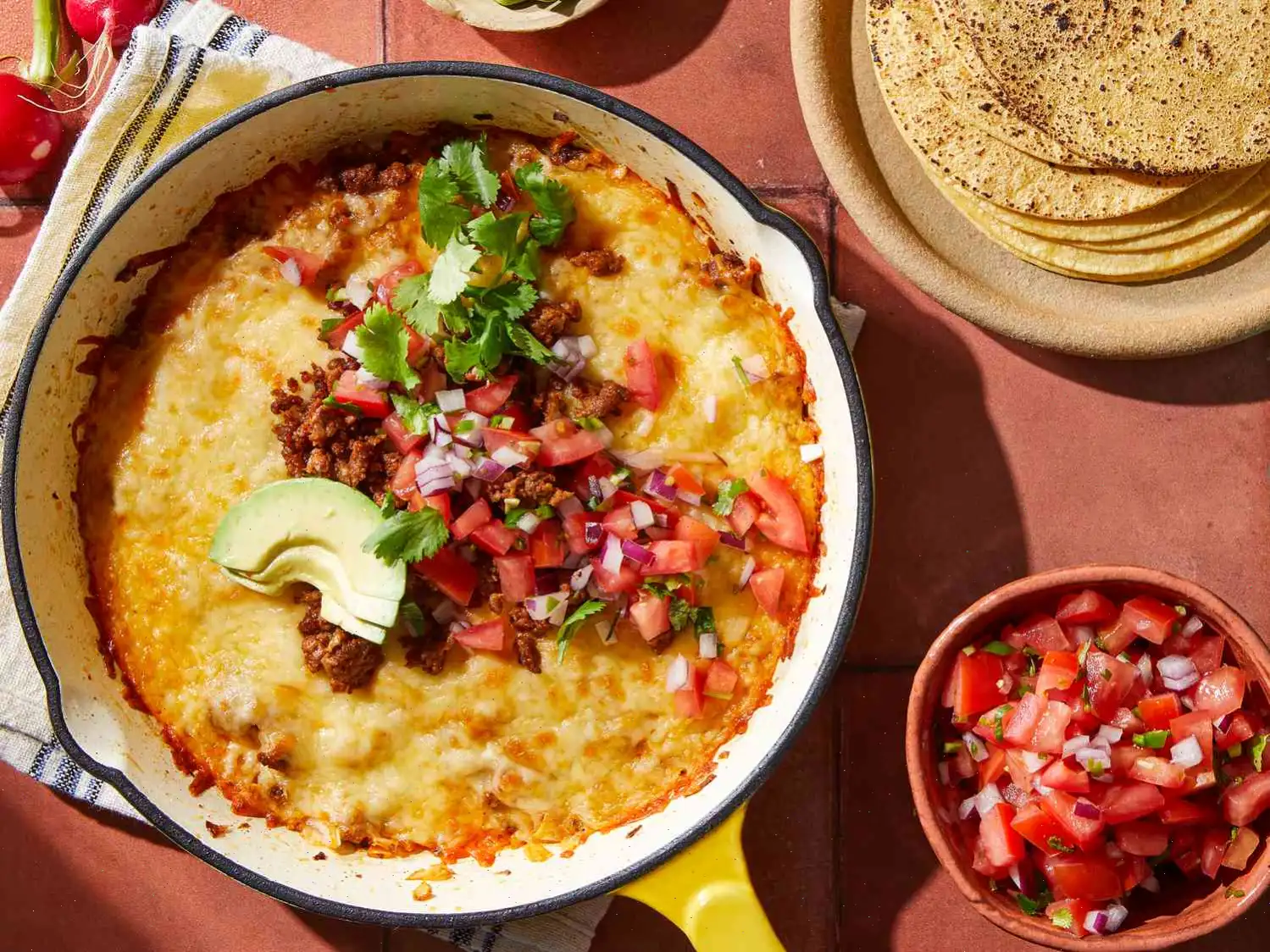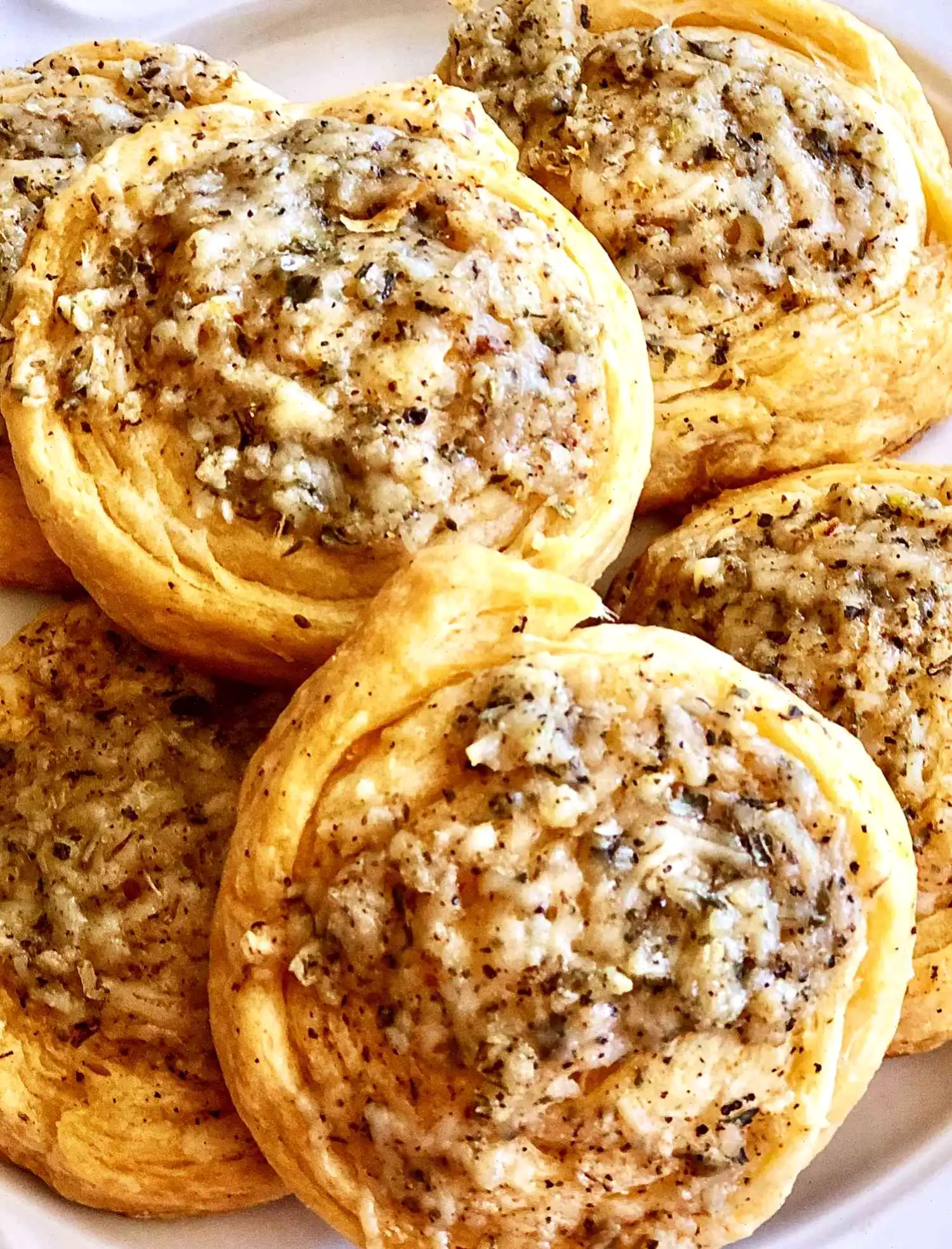
Taramosalata Recipe
Ingredients
- 13 ounces bread, crust removed
- Cold water to cover the bread
- cup olive oil
- 1 small onion, roughly chopped
- 1 large lemon, juiced
- 1 cup tarama (cured roe from carp, cod, or mullet)
Directions
- Place the bread in a bowl and cover with cold water. Let it sit for 5 to 10 minutes until the bread is fully soaked.
- Drain the water from the bowl and gently squeeze out any excess water from the bread.
- In a food processor, combine the soaked bread, olive oil, chopped onion, and lemon juice. Process until the mixture is smooth and creamy.
- Add the tarama to the mixture and process again until all ingredients are well combined.
- Taste the mixture and adjust seasoning if needed. Add more lemon juice for acidity, more tarama for a stronger flavor, or more olive oil for a richer texture.
- For a modern variation, try caramelizing the onions in olive oil with a pinch of chili flakes before adding them to the food processor. This adds an extra depth of flavor to the dish.
Tips
When finished blending the ingredients, taste and adjust the seasonings as desired. You can tweak the lemon juice for acidity, tarama for saltiness and flavor strength, or olive oil for richness.
To add a modern twist, caramelize the onions in olive oil with chili flakes before processing for a slightly spicier and more complex taste.
Editors Note
Tarama is the cured roe from carp, cod, or mullet. You can find it in either white or pink varieties, and both work well, although white roe is generally preferred.
Nutrition Facts (per serving)
- Calories: 383
- Fat: 23g (29% Daily Value)
- Saturated Fat: 4g (18% Daily Value)
- Cholesterol: 140mg (47% Daily Value)
- Sodium: 456mg (20% Daily Value)
- Total Carbohydrates: 35g (13% Daily Value)
- Dietary Fiber: 3g (9% Daily Value)
- Total Sugars: 3g
- Protein: 13g (27% Daily Value)
- Vitamin C: 21mg (24% Daily Value)
- Calcium: 118mg (9% Daily Value)
- Iron: 3mg (16% Daily Value)
- Potassium: 189mg (4% Daily Value)
Percent Daily Values are based on a 2,000-calorie diet. Your daily values may be higher or lower depending on your calorie needs.
Taramosalata, also known as Taramasalata, is a classic Greek appetizer made from fish roe, olive oil, bread, lemon juice, and onions. Its creamy texture and rich, savory flavor make it a favorite spread, typically served with pita bread or raw vegetables. This dish has a long-standing history in Greek cuisine and is enjoyed by people around the world, especially as part of festive gatherings or traditional meals.
Origin and History
Taramosalata has its roots in ancient Greece, where fish roe was considered a delicacy, and its use dates back to the Byzantine Empire. The recipe evolved over time, with the Greeks utilizing local fish roe, such as carp, cod, or mullet, to create this simple yet flavorful dip. It was originally made during the Lent season, as it provides a satisfying alternative to meat-based dishes, in line with the religious fasting traditions. Today, taramosalata is enjoyed year-round, often as part of a meze platter, or served at celebrations such as Easter and weddings.
Regional Variations
Although the basic components of taramosalata remain the same, different regions of Greece have their own variations of the dish. In coastal areas, the roe used for the dip is often from local fish species, which might impart a different taste depending on the region. Some regions prefer a thicker consistency, while others like a lighter, creamier version. In some Greek islands, people add a dash of ouzo or vinegar to enhance the flavor. Additionally, the amount of olive oil and lemon juice can vary depending on personal preferences, with some recipes being more tangy or richer than others.
Differences from Similar Dishes
Taramosalata is often compared to other Mediterranean dips such as bacalao (salted cod dip) or bagna cauda (an Italian anchovy-based dip). However, taramosalata is distinct due to the use of fish roe, which gives it a unique, briny flavor. Unlike tzatziki (a yogurt and cucumber dip) or hummus (chickpea-based dip), which are generally creamy due to their main ingredients, taramosalata's creaminess is derived from a blend of soaked bread and olive oil, which provides a smooth texture that contrasts with the salty roe. Additionally, it is often served cold, making it a refreshing contrast to warm, spiced dishes.
Where It Is Served
Taramosalata is commonly served in Greece as part of a meze platter, an assortment of small dishes designed for sharing. It is especially popular during festive meals such as Easter, Christmas, and other celebrations. Outside of Greece, taramosalata is enjoyed in many Mediterranean countries, as well as by those who appreciate Greek cuisine worldwide. It is often served with pita bread, crackers, or vegetables, and is sometimes spread on toast or sandwiches. The dip's light yet rich texture makes it ideal for pairing with other appetizers, especially those involving fresh seafood.
Interesting Facts
1. While taramosalata is traditionally made with fish roe from carp, cod, or mullet, modern recipes sometimes use different types of roe, such as salmon or trout, depending on availability.
2. Taramosalata is a symbol of Greek hospitality and is often one of the first dishes offered to guests in a Greek home.
3. The word "tarama" comes from the Turkish word "tarama," meaning "fish roe." This highlights the historical culinary connections between Greece and Turkey, especially in the eastern Mediterranean region.
4. In some variations of taramosalata, caramelized onions or a touch of garlic are added to the mixture, giving the dip a more complex flavor profile.
5. Despite its simplicity, taramosalata has a rich, umami flavor that is both satisfying and addictive, making it a beloved dish for food lovers around the world.








